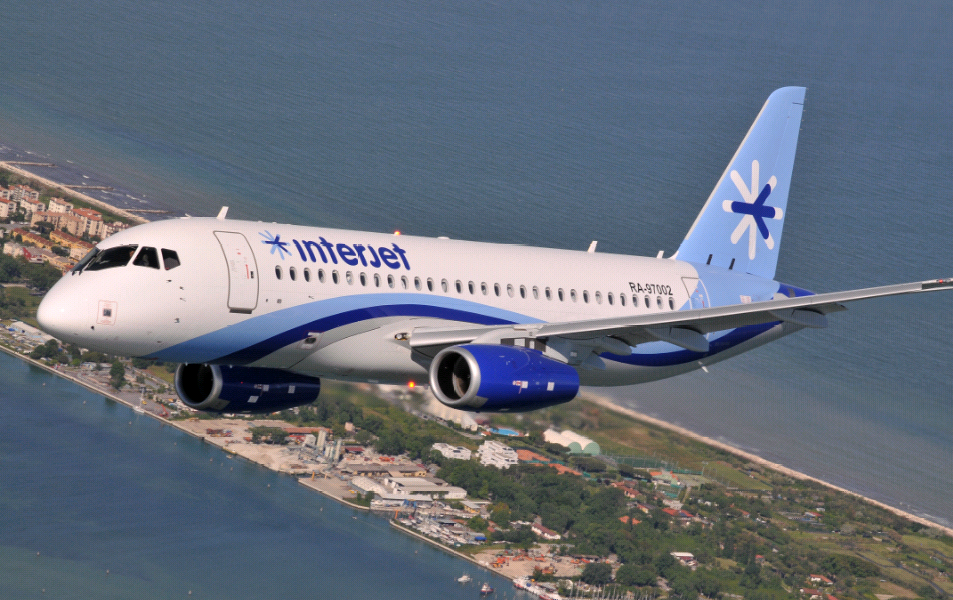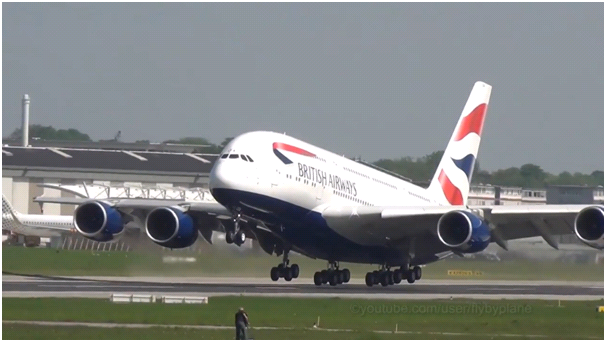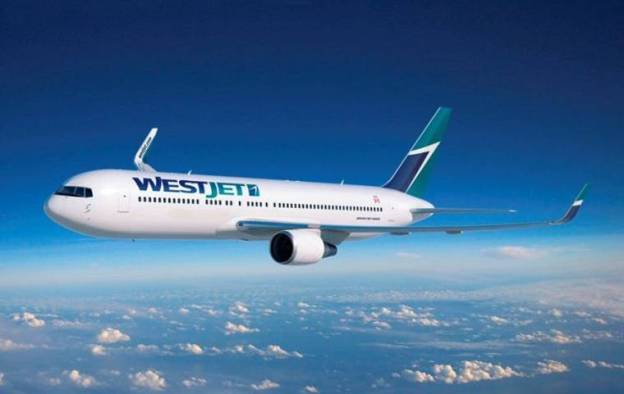Leeham News and Analysis
There's more to real news than a news release.
IAG is looking at leasing used A380s
By Bjorn Fehrm
18 January 2016, ©. Leeham Co in Dublin: Willie Walsh, the CEO of IAG (which is the holding of Brittish Airways, IBERIA, Vueling and Air Lingus) spoke at the Growth Frontiers 2016 conference in Dublin about how the new IAG has become more agile in following market changes to opportunistically increase its operational efficiency.
Walsh gave the example of IAG’s aircraft fleets where he announced that it is looking to lease five to six used Airbus A380s in addition to the ones that British Airways (BA) already have on order. These could be aircraft for BA only use but also for a joint BA and IBERIA operation.
Analysis: Sukhoi’s regional jet Superjet 100
By Bjorn Fehrm
Subscription required
Introduction
18 January 2016, © Leeham Co: Russian aircraft have never succeeded in penetrating the Western market. But then they never really tried, until now. They were designed for the Soviet Union captive market, including the partner states that historically participated in or were friendly to the communistic system. One comes to think of China, Egypt, Libya, Cuba and Nicaragua. The Sukhoi Civil Aircraft Company (SCAC) Superjet 100 (SSJ100) is the first Russian aircraft specifically designed from the outset to compete on a world market.
The Sukhoi Civil Aircraft Company (SCAC) Superjet 100 (SSJ100) is the first Russian aircraft specifically designed from the outset to compete on a world market.
We analyse its basic design and performance in comparison to the market leader in 100 seat regional flying, Embraer’s E190.
Summary:
- The SSJ100 is a half a generation younger design than the Embraer E190. It has modern aerodynamics, IMA-based modular avionics and an advanced Fly-By-Wire system.
- The feedback-based Fly-By-Wire enables a tight aircraft design with low wetted areas.
- The SSJ100 engines, SaM146, can best be described as a shrinked and cleaned up CFM56. They have the efficiency level of the E190’s CF34-10E.
- The aerodynamics and engines combine to give the SSJ100 a single digit edge in fuel burn over the E190.
Bjorn’s Corner: What did we learn in 2015; engines
15 January 2016, ©. Leeham Co: Last week we looked back on what happened in 2015 on the airframe front. We finish the retrospective by looking at what turbofan engine technology came to market in 2015. New engine technology is vital, as it is on the engine side that the quest for higher fuel efficiency has the largest successes.
While advances on the airframe side might bring an additional 5% per generation, the engines typically increase their efficiency per new generation with up to three times that value. Fuel efficiency per delivered thrust unit was improved with a whopping 15% over the engine it replaces for the Pratt & Whitney Geared Turbofan (PW GTF). It was certified for use on the Airbus A320neo in Q4 2015
The competing CFM LEAP-1A shall deliver the same improvement level to the A320neo once it is certified in the summer of this year. This engine has a smaller sister that started ground tests last year, the LEAP-1B, which is developed for the Boeing 737 MAX series.
The engine that is easily forgotten is the Rolls Royce Trent XWB. It entered service on the Airbus A350-900 during the year. It brings an improvement level of around 10% compared to the engines of the aircraft that the A350 replaces (Airbus A340/A330ceo and Boeing’s 777-200 range).
How good is a used 767-300ER? Part 4
Subscription Required.
By Bjorn Fehrm
Introduction
Jan. 6 2016, ©. Leeham Co: We now finish our series of acquiring a used Boeing 767 aircraft to upgrade a Boeing 757-based long haul service. The 767 went out of favor recently as it has higher fuel consumption per seat than competing aircraft like Airbus A330-200.
With today’s low fuel prices and favorable used prices, a well kept 767-300ER is once again an interesting long haul aircraft. In previous articles, we looked at different aspects of the 767-300ER compared with the A330-200. First we compared the aircraft’s characteristics (Part one), then Cash Operating Costs (Part two) and finally Direct Operating Costs (Part three).
We now finish the series with a revenue and margin analysis. First we establish the competitor’s payload carrying capabilities over a trans-Atlantic network. Then we calculate their revenue capabilities using standard yields (revenue per load unit). The revenue and cost data then gives us the operating margins for the aircraft.
Summary
- The 757 has the lowest costs but is considerably more limited in its payload and range capability than the 767 and A330. Its lack in capacity is augmented by a lack of cargo handling facilities.
- The 767 has a cargo handling concept, unfortunately with the wrong container standard, LD2. The alternative is pallet based freight, which works well for the 767.
- The A330-200 has the best passenger and cargo transporting capability. This compensates for its higher Direct Operating Costs but the low fuel prices keeps the 767 in the hunt.
How good is a used 767-300ER? Part 3
Subscription required
By Bjorn Fehrm
Introduction
Jan. 4 2016, ©. Leeham Co: Before Christmas we started our Boeing 767-300ER article series around acquiring used twin-aisle 767 aircraft to upgrade Boeing 757-based long haul services. We compared the aircraft’s base characteristics in Part One and then their Cash Operating Cost (COC) in Part Two.
Now we continue by analyzing the Direct Operating Cost (DOC) of the aircraft. This adds capital costs to the other operating costs for the aircraft. As the reason for our renewed interest in the 767-300ER is the attractive prices on the used market combined with low fuel prices, the capital costs are an important part of the overall understanding of the costs for the aircraft.
In our assumptions, the 767 is bought as a 10 year old aircraft and then refurbished. It is then operated on a six year financial lease, as is our 757 that we replace. Our benchmark aircraft, the Airbus A330-200 flying in a mainline airline, was bought new in 2009 and is operated on a 10 year financial lease.
Summary
- The low capital costs of the 767-300ER makes it cost competitive in the fuel scenarios that are likely within its six year lease period.
- The 757-200W has fractionally lower direct seat mile costs than the 767, but it has lower capacity and its more limited range reduce its operational usefulness.
- The A330-200 has the best operational flexibility but its higher capital costs makes it the most expensive aircraft to operate in the period of interest.
- In a final article, we will add the revenue capability of the aircraft. This is where the A330-200 gets the chance to show if it can cover its higher direct costs with its higher earnings capability, thereby generating more value for the airline.
How good is a used 767-300ER, Part 2
Subscription required
Introduction
By Bjorn Fehrm
Dec. 21 2015, ©. Leeham Co: Last week we started our Boeing 767-300ER article series around acquiring used twin-aisle 767 aircraft to upgrade 757-based long haul services, like Canada’s WestJet has done. We compared the aircraft and looked at the base data for the aircraft in article one.
Now we continue by analyzing the Cash Operating Cost (COC) of the aircraft in a typical long haul configuration, using our normalized seating. We are assuming that the 767 and the 757 are a half-life state between overhauls of engines and airframe.
Our benchmark aircraft is an Airbus A330-200 which is flying in a mainline airline. Here we assume that it is 25% deteriorated since new for engines and airframe.
Summary
- The 767-300ER and A330-200 differ in fuel and crew costs per seat mile but are close in most other cost items for COC.
- The 757-200W has lower fuel operating and crew costs than a 767 for the sectors it can perform. It is more expensive in maintenance and landing/underway fees on a per-seat basis.
- Overall the 767 is sufficiently within range of the A330-200 for cash operating costs so that when we add capital costs, it could be close to a draw.
- Finally, we will look at the earnings capabilities of the aircraft by adding standard yields for the payloads the aircraft can carry.
Bjorn’s Corner: Engine efficiency revisited
18 December 2015, © Leeham Co:Part of the discussion following last week’s article around quad or twin engine airliner designs was about engine efficiency and specifically around the engine’s thermal efficiency as a function of Pressure Ratio, PR.
I got the question, if an engine working at a higher pressure ratio was therefore working at a higher thermal efficiency. I knew enough on the subject to know I did not have a good answer without doing a bit of checking; jet engines are no simple contraptions.
I have previously written about turbofan efficiency in a Corner. The article was focused around propulsive efficiency. Now we will have a look at the other part of overall engine efficiency, the thermal efficiency or the efficiency of the core.
How good is a used 767-300ER?
Subscription required
By Bjorn Fehrm
Introduction
Dec. 16 2015, ©. Leeham Co: Fuel prices at a record low changes a lot of short- and mid-term planning scenarios for airlines. An introduction of a used aircraft with higher fuel burn for a typical lease period of five to six years is possible without endangering the airline’s economics.
The risk of oil prices going sky high in such a period is low, hence the attractiveness of complementing ones fleet with leased older aircraft like Canada’s WestJet has done. It will introduce ex. Qantas 767-300ERs on several traditional 757 destinations like Hawaii and presumably West Europe.
We therefore expand our in dept look of the deployment of used aircraft with a look at the WestJet choice; Boeing’s 767-300ER and compare it to a more contemporary twin, Airbus A330-200.
Summary:
⦁ The 767-300ER is around 25 seats smaller than our benchmark aircraft, the more modern A330-200.
⦁ The A330-200 previously put the 767 under pressure and Boeing responded with the 787-8. We will check if this is still the case when oil is below $40 a barrel and leasing cost for a used 767 is below $300,000.
⦁ We will also check what load-factors an airline like WestJet has to attain on the 767 to reach the same seat-mile costs as for the 757 that the route was up-gauged from.
⦁ We will follow the scheme of the 777-200ER vs. A340-300E comparison, Part 1 compares the aircraft, Part 2 the costs and Part 3 the revenue and margin performance of the aircraft.
Bjorn’s Corner: Twins or quads?
11 December 2015, ©. Leeham Co: The debate over two or four engines for long range aircraft is as old as the jet airliner. A number of myths have been pedaled over the years over the virtues of the one over the other. The myths have even been presented by airline CEOs as “facts that are known in the industry.”
Having done several in-depth comparisons of two-vs-four engined long range aircraft, we can’t find the patterns that these myths propel: that a quad is less efficient than a twin and should have higher maintenance costs. What we see is that it is all dependent on what one compares and to what technology generation the one or the other aircraft belong.
When we didn’t get the same results as the myths on a number of areas, we started to wonder what could have created the myths in the first place. Looking at what four engined airliners could have been the source of the rumours, we started to see a pattern. It was a pattern of apple-and-oranges being compared and wide ranging conclusions being drawn.
Here is what we found. Read more





Top 10 Stories in 2015
Here are the Top 10 stories on Leeham News and Comment for 2015:
Read more
10 Comments
Posted on December 23, 2015 by Scott Hamilton
Airbus, Airlines, Boeing, Emirates Airlines, GE Aviation, Leeham News and Comment, Malaysian Airlines, MH370
737, 737-8, 737-8ERX, 737-9, 747-8, A320, A321LR, A321NEO, A350-900LR, A380neo, Airbus, Boeing, Emirates Airline, Malaysia Airlines, Singapore Airlines